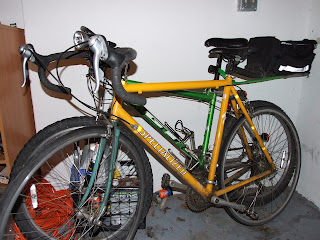So what's the first thing you do when you have a house with a lawn and you want to plant a garden? Dig it up right? This is done with a rototiller or a shovel. The ground is usually rock hard clay which is really hard to dig and pretty poor soil to grow a garden in. So after you till it, you have to put in fertilizer, compost, peat moss, etc, etc, etc. Tilling also spreads weed seeds and increases soil erosion because there is bare soil with nothing holding it in place. Let's me honest - it's a lot of hard work and no one wants a lot of work. Remember, this is supposed to be less work than having a lawn.
That's the beauty of sheet mulching. Sheet mulching aerates the soil, kills the weeds and grass, enriches the soil with organic material and prepares for garden planting all with ZERO digging. The basic idea is very simple - you layer 4 different layers right on top of your existing lawn and it will compost over time right into the ground.
The first layer is shown as compost but I will use horse manure. There are a lot of people around Redlands with horses and I'm thinking they will likely be happy to have someone shovel up and haul away the manure. This layer should be 2-3 inches thick. You then spray some water on this layer to soak it through and wet the soil underneath.
The next layer is the weed barrier layer. You can use 6-8 sheets of newspaper, burlap, organic carpet, or cardboard. I'll use cardboard because its very easy to get. This layer keeps the grass and weeds underneath from growing through the manure. The sheets of cardboard must be overlapped by at least 6 inches.
The next layer will be leaves or hay or compost. This layer needs to be as free from weed seeds as possible since there is no barrier above this layer. I plan to see if i can get some rotten hay from local livestock growers. If that doesn't work, I'll buy some hay and spread that around. This layer should be 3-4 inches thick.
The last layer is to basically make the whole thing presentable to your neighbors. I'll buy some straw or find a tree trimmer that wants to get rid of wood chips or find a wood working shop and get sawdust and put this on top. This layer should be 3-4 inches thick as well.
Doing this should take one person less than a day once you have the materials collected to cover a decent sized plot. Now you wait several months. At the end of several months, there will be thousands of worms and trillions of beneficial soil bacteria in an area that used to be devoid of almost all soil life. The worms will dig up the soil and aerate the soil and it will be perfect for planting.
There's several good places to read further about it - here's
one.
When we actually do this, I'll put up a post with pictures of it every step of the way start to finish.









